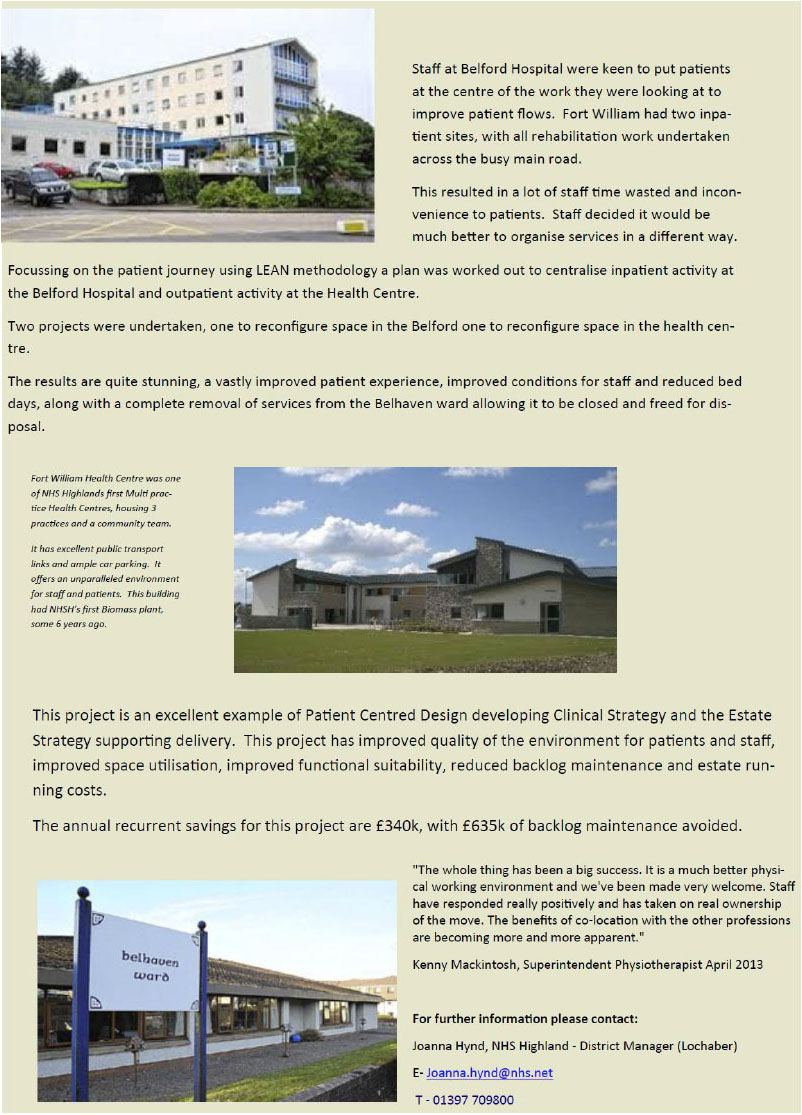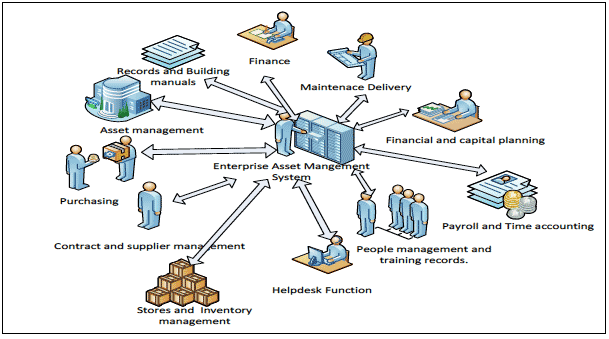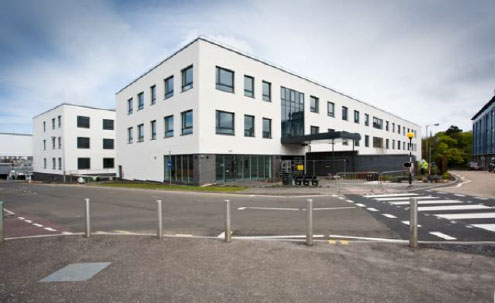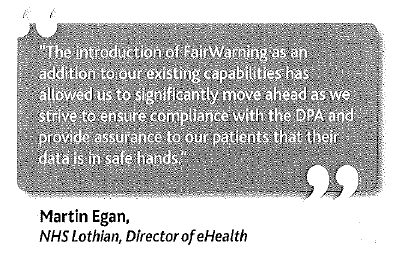Annual State of NHSScotland Assets and Facilities Report for 2013
A review of asset and facilities management performance in NHSScotland, identifying the current state of the estate and facilities management, highlighting areas of best practice and areas for improvement.
Annex A: Case Studies
This annex of the report provides short summaries of a number of best practice case studies covering different aspects of managing assets and facilities services in NHSScotland. It also incorporates a series of proposed national / regional programmes for potential roll-out across NHSScotland which may offer value to a wider audience if implemented.
The case studies and national / regional programmes are aimed at promoting and learning from good practice, and to provide the reader with information on actions being taken elsewhere in NHSScotland to deliver improvements in the performance, efficiency and sustainability of assets and facilities services. It is envisaged that this will be a key feature of this annual State of NHSScotland Assets and Facilities Report, aimed at helping NHSScotland to develop capability and capacity to deliver high performing, efficient and sustainable assets and facilities services. They have been selected because they are innovative and should have a significant impact on performance. Also, they should be easily replicated more widely across NHSScotland.
Best Practice Case Study 1
NHS Highland: Rehabilitation Service Redesign

Best Practice Case Study 2
NHS Highland: Modernising Estate Work Practice Electronic Enterprise Asset Management System.
NHS Highland has introduced an Enterprise Asset Management System (EAMS) to control the maintenance of its Estate. In an EAMS everything is integrated into the system, for example, purchasing, Maintenance, asset history, contract maintenance as shown in the diagram below.

EAMS allows detailed accurate reports to be produced that ensure optimum arrangements are in place to help plan for future maintenance and replacement programmes and enable maintenance techniques like condition based monitoring and reliability centred maintenance to be carried out. These are useful tools in optimising maintenance and can all be supported by the system.
In addition, NHSH has introduced electronic work orders, so that work is scheduled electronically and no paper is used. Apart from the obvious time savings, this also speeds up the system information, moving to real time information.
Also, electronic scheduling automatically picks the most efficient method of allocating the workforce to the list of tasks based on a set of rules and a GPS mapping system. This has enabled NHSH to achieve a turnaround in maintenance performance. In 2007 75% of the work done was unscheduled reactive maintenance. That figure is now down to 40%. Only around a quarter of planned maintenance was regularly done, this is now steadily improving towards 100% with areas of sustained performance of over 70%.
The EAMS system also allows schedule optimisation by means of forward resource levelling. This allows resources to be moved around to meet peaks and troughs in the workload and to ensure that the optimum arrangements are in place.
Best Practice Case Study 3
NHS Lothian: Royal Victoria Building

One of the highlights of NHS Lothian's year was the opening of the Royal Victoria Building on the Western General Hospital Site. The building was one of the first to be procured and delivered through the Framework Scotland process and also one of the first to provide 100% single rooms with en suite facilities in an acute setting.
The facility provides 6 wards with 147 beds for Care of the Elderly, and the design of its inpatient accommodation has enhanced the patient experience in relation to safety, privacy and dignity, and will contribute to the reduction in Hospital Acquired Infection, specifically air-borne infection.
The design incorporates good observation of the patient with patient safety technology incorporated into the design - using the Wanderguard system which incorporates sensors and alarms if the patient leaves the ward or if someone is getting out of bed and may require assistance.
The project also incorporates a number of initiatives developed to provide an environmentally friendly building, which should enable it to achieve a BREEAM Excellent rating. These include:
- Use of photo-voltaic panels and ground source heat pumps.
- Low flush WC's, low energy lifts, occupancy and light sensors.
- Building fabric - high degree of recycled material
- Good use of daylight in design
- Considerate Contractors award - incorporating high level of construction site waste management
- Space provided to accommodate waste segregation and support recycling policy
- Water services designed to minimise water-borne disease (legionella).
Best Practice Case Study 4
NHS Lothian: Improved Data Security

Best Practice Case Study 5
NHS National Services Scotland: Scenario Planning
Scottish Government guidance on developing a Property & Asset Management Strategy (PAMS) is for scenario planning to be undertaken to develop a PAMS that is agile and flexible to long term change. This means developing a view of possible or likely future changes - not simply basing it on predicted or expected change.
NHS National Services Scotland (NSS) are the first NHS Board in Scotland to use this technique as an integral part of their PAMS
The process was based on creating a series of 'different futures' by asking questions such as What if? Where? When? and How? around issues that were difficult to define but had a range of both occurrences and impacts.
The scenario planning process adopted by NSS involved the following stages:
1. Scoping - agree on the questions/issues that it was trying to address and explore.
2. Analysis - identify and analyse major drivers for change and trends in relation to the organisation, particularly those that were most likely to impact on the PAMS.
3. Scenario Building - use the outcomes of Stages 1 & 2 to build a realistic and plausible range of future scenarios.
4. Testing the Scenario - identify and discuss potential implications and impacts of scenarios on the development of the PAMS.
5. Developing an Action Plan - use the outcomes from the above to develop an action plan for coping with alternative futures and embed this into the PAMS.
NSS is a diverse organisation which provides a wide range of services and has a correspondingly wide range of assets, however, for the purpose of the scenario planning exercise these assets were broadly categorised as clinical and non-clinical. The initial scenario planning workshops were designed around these two different asset groups with different participants bringing expertise and experience of the clinical and non-clinical assets respectively to the workshops. The outcomes were then were brought together in the final workshop where common themes and issues were reviewed across the asset groups.
The main benefits gained from this process were:
- It provided a valuable insight and understanding of how future change could impact on the need for property and assets (and on the organisation as a whole);
- It enabled better understanding of the decisions that the organisation is likely to face in the future in relation to its assets;
- It developed an "agile" and resilient PAMS that will serve the organisation well in a number of different futures.
Potential opportunities for national / regional programmes taken from previous best practice case studies
The following are a series of proposed programmes for potential roll-out across NHSScotland. They are based on best practice case studies included in previous State of NHSScotland's Assets & Facilities Reports. They are presented here to inform discussions on their merits for further development.
| Programme name: |
Partnership working |
|---|---|
| Scope: national/regional |
Regional - location-specific due to different geographical boundaries of LA's and Boards, but with a national strategic objective. |
| Objective |
A standardised approach to property and asset management across publicly supported bodies. Integration of service planning with community development to establish a vision of the number and nature of healthcare facilities required to support the needs of developing communities |
| Description |
Joint approach to property and asset management with other public sector organisations to address a number of shared challenges and move towards achieving change in service delivery. |
| Ease of implementation |
Challenging. Requires collaboration at strategic and operational level between different public sector partners with non-synchronous geographic boundaries. Once started, is a continuous process. |
| Benefits |
A joint approach to property and asset management between public sector bodies will be essential to the delivery of more ambitious change to meet the Government's health and social care objectives. |
| Next Steps |
Use NHS Forth Valley as exemplar model for discussion with NHS Boards, Local Authorities, Fire and Rescue Services etc to explore possibilities of wider implementation nationally. |
| Programme name: |
GIS mapping |
|---|---|
| Scope: national/regional |
National |
| Objective |
Identify service gaps and ensure service provision closer to people's homes. |
| Description |
Use Geographical Information System mapping to assist in the planning of integrated services to meet the needs of communities. |
| Ease of implementation |
May require roll-out of a national GIS system although Local Authorities are already part of a national GIS roll-out. NHS Grampian leading in liaison with LA. Requires access to clinical data (ISD?) |
| Benefits |
Add value to service planning by identifying gaps in service provision and improve services. |
| Next Steps |
Explore take up within NHS Boards and examine options using NHS Grampian experience as exemplar. |
| Programme name: |
Integration of health, local authority and third sector services in town centre locations |
|---|---|
| Scope: national/regional |
Regional - location specific - but a possible national strategic objective. |
| Objective |
Assist in town centre regeneration and maximise value for money by promoting local collaboration in planning and delivering public services. |
| Description |
Combine health board, council-run and other services within well-designed facilities located and designed to support local communities. |
| Ease of implementation |
Requires extensive collaboration with local community groups, the client and, end-users. Principle already being driven within some hub Initiative projects. |
| Benefits |
Stakeholders working in an open and collaborative manner can ensure the delivery of efficient, well-designed facilities of a quality and in town centre locations which meet the specific requirements of each individual user group and patient needs and assists regeneration. |
| Next Steps |
Explore further project possibilities with SFT, HFS, A+DS, NHS Boards and Local Authorities. Examine Renfrew Health and Social Work Centre and Barrhead Health and Care Centre as exemplars. |
| Programme name: |
Ambulatory Care and Diagnostic services |
|---|---|
| Scope: national/regional |
National? |
| Objective |
Facilities to provide acute services without overnight stay around the needs of the patient. |
| Description |
Essentially a hospital without beds. This new type of hospital has the potential to deal with the majority of the patient load of a district general hospital by concentrating on outpatient consultation and day surgery and therefore can have a high throughput of patients. The New Stobhill Hospital and New Victoria Hospital are exemplars of this type of service provision. |
| Ease of implementation |
Dependent upon national and regional service strategy. |
| Benefits |
Services are redesigned around the needs of the patient to enhance the quality of care and speed up diagnosis and treatment. Facilities are not required to be open 24 hours per day, thus reducing operational costs. |
| Next Steps |
Explore service strategy options with SGHSC clinical colleagues and NHS Boards. Examine NHS GG&C strategy for provision of Stobhill and Victoria hospitals as exemplar. |
| Programme name: |
Office accommodation rationalisation |
|---|---|
| Scope: national/regional |
National |
| Objective |
Free up clinical accommodation to assist in directing resources to front-line service delivery. |
| Description |
Relocation of Board corporate support functions from clinical accommodation to central location, close to public transport hubs. |
| Ease of implementation |
Must be component of Board Clinical Strategy. May require negotiation of commercial leases. |
| Benefits |
Improve efficiency, maximise benefits of improved accommodation and facilitate new ways of working. Assist in statutory compliance. Reduce energy consumption. Release revenue budgets. |
| Next Steps |
Explore with SFG and SG Property Division. NHS Lothian has implemented through its Clinical Accommodation Release Strategy. |
| Programme name: |
Introduction of eHealth into hospital ward patient bed management. |
|---|---|
| Scope: national/regional |
National - based on eWARD system currently used by NHS Forth Valley. |
| Objective |
Improve accuracy of information and remote access to patient flow/demand management. Outcomes align with the 'Releasing Time to Care' initiative. |
| Description |
eWARD assists in the management of care provided to hospital in-patients, including electronic medicines management and automated production of Immediate Discharge Documents and Nursing Transfer Documents. eWARD can be linked to NHSScotland-wide SCI Store to obtain patient demographics, and discharge documents can be sent electronically to GP's via NHSScotland-wide SCI Gateway. |
| Ease of implementation |
Would require Board buy-in and national procurement and roll-out of eWARD system. |
| Benefits |
Standardisation nationally and linkage of ward information and processes, reduced duplication in recording patient information at local level. Annual recurring financial savings (e.g. NHS Forth Valley saving £130k per annum). There may be additional benefits from linking data to other systems, e.g. stats to assist strategy development. |
| Next Steps |
Explore with SFG and eHealth colleagues. Use NHS Forth Valley experience as exemplar. |
| Programme name: |
Energy Efficiency Retrofitting Programme |
|---|---|
| Scope: national/regional |
National |
| Objective |
To minimise the energy consumption and associated greenhouse gas emissions from the NHSScotland estate |
| Description |
A programme of energy efficiency retrofitting measures is to be rolled out across the NHSScotland estate, focusing initially on the acute hospital estate and other sites with a poor energy/ greenhouse gas (GHG) emissions performance. The aim is for each site to implement a package of measures to ensure that the site's energy consumption/ GHG emissions meet at least good practice benchmark standards. Individual projects will involve a range of technologies, including boilerhouse refurbishment, lighting upgrades, variable speed drives, voltage optimisation, building control upgrades and renewable energy installations. |
| Ease of implementation |
Requires an initial programme of comprehensive energy audits to determine the scale and nature of projects required Requires significant capital investment, likely >£250million across the whole estate. |
| Benefits |
Energy consumption and associated GHG emissions savings Financial savings Improved patient environments Reduced maintenance |
| Next Steps |
Collaborative work with HFS, Resource Efficient Scotland and others to carry out energy audits and identify/ quantify suitable projects Collaborative work with Scottish Futures Trust to determine appropriate funding models and forms of contract. |
| Programme name: |
Sustainable recycling of trade water effluent from regional laundries |
|---|---|
| Scope: national/regional |
National |
| Objective |
Sustainable use of water and gas energy resources within a healthcare laundry environment. |
| Description |
Adoption of new technology systems for filtration and recycling plant within all NHSScotland laundry units. |
| Ease of implementation |
Adopted by NHS Greater Glasgow & Clyde - can be used as exemplar. Requires significant capital investment but short pay-back period. |
| Benefits |
Water consumption savings - NHSGG&C 70% Energy savings (heat recovery) - NHSGG&C 95% Carbon emissions reductions Financial savings including trade effluent cost savings |
| Next Steps |
Explore with SFG using NHS GG&C exemplar as basis. |
| Programme name: |
Food waste vacuum system |
|---|---|
| Scope: national/regional |
National |
| Objective |
Assist compliance with Zero Waste regulations |
| Description |
Dedicated food waste handling system which allows food waste to be processed, dried, compacted and collected for either off-site composting or off-site recycling into biogas for electricity generation. |
| Ease of implementation |
System requires up-front investment and catering staff training and education. |
| Benefits |
Savings on water and electricity. Reduced carbon footprint. Financial saving from waste water penalties imposed for putting food waste into drainage system. Better compliance with Zero Waste regulations. |
| Next Steps |
Explore with SFG, WMSG. Monklands Hospital and Girvan Community Hospital have such systems. |
Contact
Email: Gillian McCallum
There is a problem
Thanks for your feedback